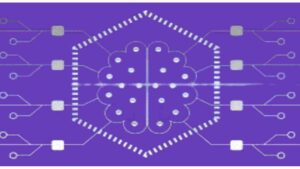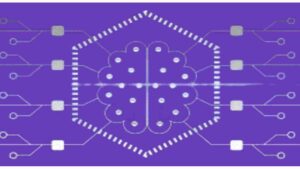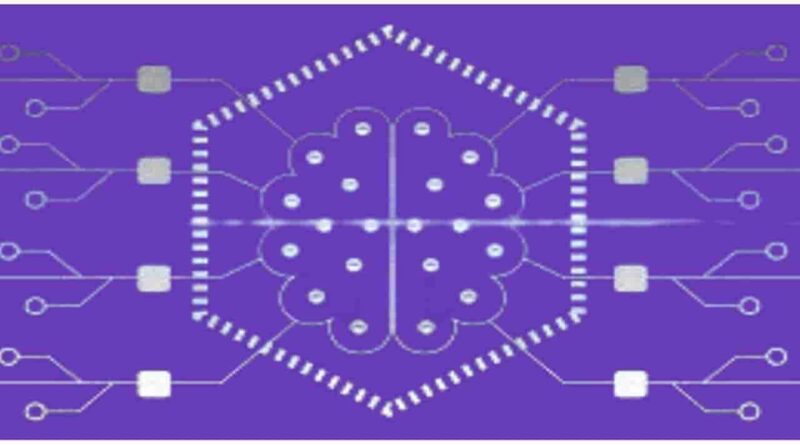Natural Language Processing10 Essential Facts About NPL
Natural Language Processing10 Essential Facts About NPL
10 Essential Facts About Natural Language Processing
NLP Applications in AI.
Natural language processing
What is Natural language processing:
Natural Language Processing (NLP) is a subfield of computer science and artificial intelligence (AI) that focuses on the interaction between computers and humans’ natural language. It involves developing algorithms and computational models that can analyze, interpret, and generate human language data.
NLP enables machines to understand human language, interpret meaning, and respond to text or speech input in a way that is natural and intuitive for humans. The applications of NLP are diverse and can range from language translation, sentiment analysis, chatbots, speech recognition, and information extraction, to name a few.
Some of the key techniques used in NLP include machine learning, deep learning, natural language generation, and natural language understanding. The field is constantly evolving, and new techniques and approaches are being developed to improve the accuracy and effectiveness of NLP applications.
NLP is an interdisciplinary field that involves computer science, linguistics, mathematics, and statistics.
With the explosion of textual data in the digital age, NLP has become an essential technology for processing and analyzing natural language data. In this article, we will explore the basics of NLP and its various applications.
Introduction to Natural Language Processing
Human language is complex and varied, and computers have traditionally struggled to understand and interpret it. NLP is a set of techniques and algorithms that enable computers to understand, process, and generate natural language. NLP involves several tasks, including parsing, semantic analysis, sentiment analysis, machine translation, and speech recognition.
NLP has become increasingly important due to the explosion of textual data in the digital age. From social media posts to customer reviews, there is a vast amount of natural language data that can be analyzed to gain insights and make informed decisions.

Applications of Natural Language Processing:
Sentiment Analysis: Sentiment analysis is a technique used to identify and extract subjective information from textual data. It is commonly used to analyze social media posts, customer reviews, and feedback to understand the sentiment of the audience.
Machine Translation: Machine translation is the process of translating one language into another using automated tools. It is commonly used in industries such as e-commerce, travel, and tourism to translate product descriptions, user reviews, and other content into multiple languages.
Chatbots: Chatbots are computer programs that simulate human conversation using NLP techniques. They are commonly used in customer service to provide automated responses to frequently asked questions.
It is commonly used in voice assistants such as Siri and Alexa, as well as in industries such as healthcare to transcribe medical dictation.
Natural Language Processing10 Essential Facts
Text Summarization: Text summarization is the process of generating a shorter version of a longer text while retaining its most important information. It is commonly used in industries such as news and media to generate article summaries.
Challenges in Natural Language Processing
Despite the advances in NLP, there are still several challenges that researchers face. Here are some of the most common challenges:
Ambiguity: Human language is often ambiguous, and words can have multiple meanings depending on the context. Resolving this ambiguity is a challenging task in NLP.
Language Variation: There are several variations of language, including slang, dialects, and regional differences. Understanding these variations is essential for accurate language processing.
Data Availability: NLP techniques require large amounts of labeled data for training. However, obtaining such data can be challenging, particularly for languages with limited resources.
Recent Advances in Natural Language Processing:
Natural Language Processing: In recent years, there have been several advances in NLP, particularly in the area of deep learning. Here are some recent developments in the field:
Transformer Models: Transformer models are a type of neural network architecture that has revolutionized the field of NLP. Transformer models, such as BERT and GPT-3, are pre-trained on massive amounts of text data and can be fine-tuned for various NLP tasks.
Transfer Learning: Transfer learning is a technique that allows NLP models to be trained on one task and then transferred to another task. This approach has been shown to be highly effective in NLP, allowing models to be trained on small datasets and still achieve state-of-the-art performance.
Multilingual Models: Multilingual models, such as XLM and mBERT, can understand and generate text in multiple languages. These models have the potential to break down language barriers and enable more effective communication across different cultures.

Zero-shot Learning: Zero-shot learning is a technique that allows models to perform NLP tasks without any training data in the target language. This approach has been shown to be highly effective in machine translation, where models can translate between language pairs that have never been seen before.
Future of Natural Language Processing:
The future of Natural Language Processing10 (NLP) looks promising, with continued advances in deep learning and other techniques. Here are some potential areas of development:
Explainable NLP: Explainable NLP is a growing area of research that aims to make NLP models more transparent and interpretable. This is particularly important for sensitive applications such as healthcare, where decisions made by NLP models can have significant consequences.
Context-aware NLP: Context-aware NLP is a technique that takes into account the context of a text to improve accuracy and reduce ambiguity. This approach has the potential to improve performance in tasks such as machine translation and sentiment analysis.
Natural Language Processing: Conversational AI:
Conversational AI is an area of NLP that focuses on developing chatbots and voice assistants that can hold natural and meaningful conversations with humans. This approach has the potential to transform industries such as healthcare, where conversational AI could be used to provide personalized healthcare advice.
Challenges and Ethical Considerations in Natural Language Processing;
While NLP offers many benefits, there are also challenges and ethical considerations to be addressed. Here are some of the most pressing issues:
Bias: NLP models can inadvertently learn and perpetuate bias based on the data they are trained on. This can lead to discriminatory outcomes, particularly in sensitive areas such as hiring, lending, and criminal justice. Addressing bias in NLP is a critical challenge that requires ongoing attention and effort.
Natural Language Processing Privacy: NLP models can be used to extract sensitive information from text data, such as personal details, health information, and political views. As such, there are concerns around data privacy and the responsible use of NLP techniques.
Explainability: As NLP models become more complex, they can become more difficult to interpret and explain. This is particularly problematic in sensitive applications such as healthcare, where decisions made by NLP models can have significant consequences.
Limited Resources: Many languages and dialects lack sufficient resources for NLP research and development. This can result in underrepresentation and the perpetuation of bias in NLP models.
Addressing these challenges and ethical considerations is essential for the responsible development and use of NLP technology. Organizations and researchers must prioritize fairness, transparency, and accountability in their NLP efforts to ensure that these technologies benefit society as a whole.
Applications of Natural Language Processing:
Natural Language Processing has a wide range of applications in various industries.
Sentiment Analysis: Sentiment analysis is the process of determining the emotional tone of a piece of text. This application is used in marketing, customer service, and social media analysis.
Natural Language Processing Machine Translation: Machine translation is the process of automatically translating text from one language to another. NLP techniques such as neural machine translation (NMT) have greatly improved the accuracy of machine translation systems, making them increasingly useful in areas such as international business and diplomacy.
Speech Recognition: NLP techniques such as automatic speech recognition (ASR) are used in applications such as voice assistants and dictation software.
Chatbots and Virtual Assistants: Chatbots and virtual assistants are AI-powered applications that can converse with humans in natural language. NLP techniques such as intent recognition and named entity recognition are used to understand user requests and provide appropriate responses.
Information Extraction: Information extraction is the process of automatically extracting structured data from unstructured text. NLP techniques such as named entity recognition (NER) and relation extraction can be used to identify entities and their relationships in text data.
 O
O
These are just a few examples of the many applications of Natural Language Processing. As NLP technology continues to evolve, we can expect to see even more innovative and impactful applications in the future.
Open sidebar
NLP examples.
natural language processing examples
Here are some examples of how NLP is used in different applications:
Sentiment analysis: NLP is used to identify and extract subjective information from text data, such as opinions, attitudes, and emotions. This information can be used to analyze the sentiment of social media posts, product reviews, customer feedback, and other text-based data.
Language translation: NLP is used to translate text from one language to another, such as Google Translate, DeepL, and many other translation applications. NLP algorithms work by analyzing and breaking down the structure of language and then transforming the text into a new language.
Chatbots: NLP is used to create conversational agents, or chatbots, which can simulate human conversation and respond to questions or requests. Chatbots are widely used in customer service and support, as well as in other applications like education, healthcare, and e-commerce.
Speech recognition: NLP is used to recognize and transcribe spoken language into text. Applications of speech recognition include voice assistants like Siri, Alexa, and Google Assistant, as well as dictation software for medical and legal professionals.
Named entity recognition: NLP is used to identify and classify named entities in text, such as people, places, and organizations. This information is used in information extraction, information retrieval, and other applications, such as news analysis and recommendation systems.
Text summarization: NLP is used to summarize long pieces of text, such as news articles or research papers. This allows users to quickly and easily understand the key points of the text without having to read through the entire document.
Text classification: NLP is used to classify text into different categories based on its content, such as spam detection, topic classification, and sentiment analysis.
These are just a few examples of how NLP is used in various applications. As NLP technology continues to improve, we can expect to see even more innovative and useful applications of this technology in the future.
here are some more examples of how NLP is used in different applications:
Information retrieval: NLP is used to extract relevant information from large collections of unstructured or semi-structured data, such as web pages, news articles, and scientific papers. This information can be used to answer user queries, provide recommendations, and facilitate decision-making.
Question answering: NLP is used to answer questions posed in natural language, such as those asked by users on search engines or in virtual assistants. This involves analyzing the question, retrieving relevant information, and formulating a concise and accurate answer.
Text generation: NLP is used to generate natural language text, such as automatic summarization, content creation, and story generation. This involves using machine learning algorithms to model and simulate the structure, syntax, and semantics of human language.
Language modeling: NLP is used to model and understand the structure and patterns of natural language, such as grammar, syntax, and semantics. This involves analyzing large corpora of text data and building statistical models that can generate or interpret new text data.
Machine translation: NLP is used to translate text from one language to another, such as in language localization or multilingual communication. This involves analyzing the structure and meaning of source text, generating a translation, and evaluating the quality and accuracy of the translation.
Speech synthesis: NLP is used to generate synthetic speech from text data, such as in text-to-speech systems or voice assistants. This involves converting written text into phonetic symbols and then synthesizing natural-sounding speech using machine learning algorithms.
Text mining: NLP is used to extract insights and knowledge from text data, such as in social media analysis, customer feedback, and market research. This involves analyzing patterns and trends in text data and generating actionable insights for businesses and organizations.
These are just a few more examples of how NLP is used in various applications, and as the field continues to evolve, we can expect to see even more innovative and exciting applications of this technology.
natural language processing in AI:
Natural Language Processing (NLP) is a key component of artificial intelligence (AI). It enables machines to understand, interpret, and generate human language, which is critical for many AI applications that involve human-machine interaction.
NLP is used in AI to enable machines to perform a wide range of tasks, such as:
Text classification: NLP can be used to classify text into different categories based on its content, such as spam detection, topic classification, and sentiment analysis. This is important for many applications, such as content moderation, personalized recommendations, and customer service.
Chatbots: NLP is used to create conversational agents, or chatbots, which can simulate human conversation and respond to questions or requests. Chatbots are widely used in customer service and support, as well as in other applications like education, healthcare, and e-commerce.
Language translation: NLP is used to translate text from one language to another, such as Google Translate, DeepL, and many other translation applications. This is important for global communication, business, and commerce.
Speech recognition: NLP is used to recognize and transcribe spoken language into text. Applications of speech recognition include voice assistants like Siri, Alexa, and Google Assistant, as well as dictation software for medical and legal professionals.
Sentiment analysis: NLP is used to identify and extract subjective information from text data, such as opinions, attitudes, and emotions. This information can be used to analyze the sentiment of social media posts, product reviews, customer feedback, and other text-based data.
Text summarization: NLP is used to summarize long pieces of text, such as news articles or research papers. This allows users to quickly and easily understand the key points of the text without having to read through the entire document.
Overall, NLP is a critical component of AI that enables machines to understand and communicate with humans using natural language. As NLP technology continues to improve, we can expect to see even more innovative and useful applications of this technology in the future.
natural language processing in machine learning:
Natural Language Processing (NLP) is a key area of machine learning, which is focused on developing algorithms and models that can analyze, understand, and generate human language.
NLP is used in machine learning to enable machines to perform a wide range of tasks, such as:
Text classification: NLP can be used to classify text data into different categories based on its content, such as spam detection, topic classification, and sentiment analysis. This is important for many applications, such as content moderation, personalized recommendations, and customer service.
Language translation: NLP can be used to translate text from one language to another, such as Google Translate, DeepL, and many other translation applications. This is important for global communication, business, and commerce.
Named entity recognition: NLP can be used to identify and extract named entities from text data, such as people, organizations, and locations. This is important for applications like information retrieval and entity linking.
Sentiment analysis: NLP can be used to identify and extract subjective information from text data, such as opinions, attitudes, and emotions. This information can be used to analyze the sentiment of social media posts, product reviews, customer feedback, and other text-based data.
Text summarization: NLP can be used to summarize long pieces of text, such as news articles or research papers. This allows users to quickly and easily understand the key points of the text without having to read through the entire document.
Question answering: NLP can be used to answer questions posed in natural language, such as those asked by users on search engines or in virtual assistants. This involves analyzing the question, retrieving relevant information, and formulating a concise and accurate answer.
Overall, NLP is a critical component of machine learning that enables machines to understand and communicate with humans using natural language. As NLP technology continues to improve, we can expect to see even more innovative and useful applications of this technology in the future.
NLP Applications.
natural language processing can be used to:
Natural Language Processing (NLP) is a field of computer science and artificial intelligence concerned with the interaction between computers and human language. It involves analyzing, understanding, and generating human language in a way that is both meaningful and useful.
Text Classification: NLP can be used to classify text into different categories based on its content, such as sentiment analysis, spam detection, and topic modeling.
Named Entity Recognition: NLP can identify and extract information about specific entities mentioned in text, such as names, locations, and organizations.
Machine Translation: NLP can be used to translate text from one language to another, such as Google Translate.
Chatbots and Virtual Assistants: NLP can be used to develop chatbots and virtual assistants that can understand natural language queries and provide appropriate responses.
Text Summarization: NLP can be used to summarize large amounts of text into shorter, more concise summaries.
Question Answering: NLP can be used to develop systems that can answer questions posed in natural language.
Text Generation: NLP can be used to generate new text, such as chatbot responses, news articles, and even poetry.
As NLP technology continues to advance, it is likely that we will see even more applications of this powerful tool in the future.
Natural Language Processing 10 Essential Facts
Natural Language Processing 10 Essential Facts About NPL
Natural Language Processing




